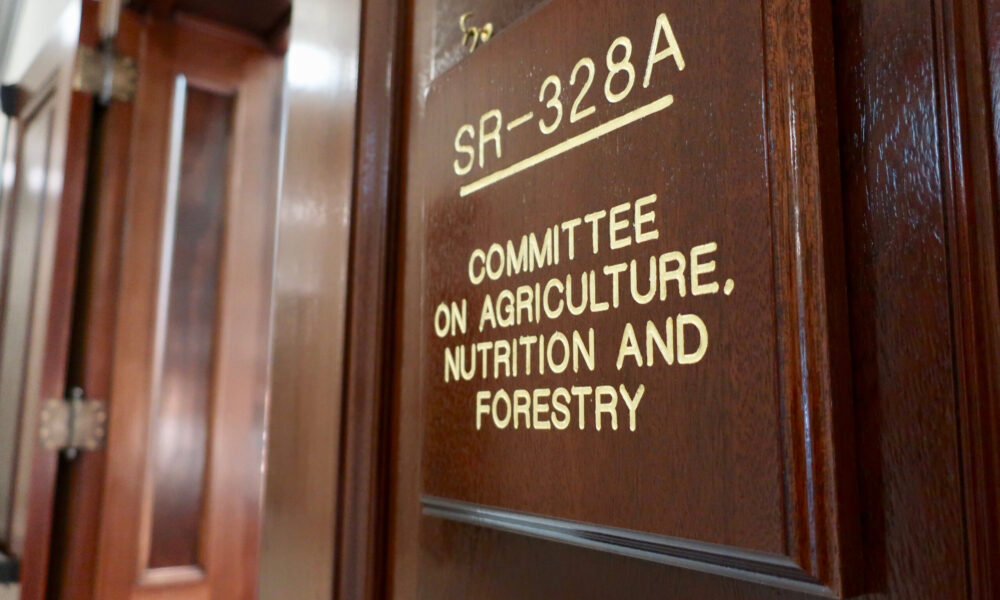Many of us remember watching “Schoolhouse Rock” as a kid and learning how a bill becomes law. But what does that process really look like—particularly when it comes to the bills that fund the US government?
Congress recently wrapped up funding parts of the government for fiscal year 2024 (FY24) . . . which began in October 2023. Yes, that’s correct—it’s taken the Senate and House of Representatives nearly six months since their official deadline to finish drafting appropriations bills, voting on them, and sending them to the president for his signature. And now that they’re finished, it’s time for them to turn right around and begin working on funding bills for fiscal year 2025 (FY25).
Welcome to the congressional appropriations process!
What is appropriations, and why is it important?
Every year, Congress drafts annual funding legislation called appropriations bills. These bills “appropriate” funding for all US government departments and agencies, including the US Department of Agriculture (USDA), which is funded through the agriculture appropriations bill. Since the USDA implements a broad variety of agricultural programming, from climate and conservation to research and nutrition, this bill is very important to the Union of Concerned Scientists’ agriculture and food security work.
Under normal circumstances, both the House and Senate agriculture appropriations subcommittees release appropriations bills in the spring for the upcoming fiscal year that begins on October 1. Once these bills are introduced, they are voted on by the subcommittees, and then by the full House and Senate Appropriations Committees, with the potential for changes to be made during this process (known as a “markup”). Once approved by the full committee, appropriations bills are then sent to the House and Senate floors for a vote by the full chamber.
Any differences between the House and Senate bills (and there are often many, especially when each chamber is controlled by a different political party) are then resolved by a conference committee, composed of members of both the House and Senate. Once the conference committee finishes its work, the final bill is sent to the president to be signed into law.
Is that the way the process usually works?
In reality, this relatively straightforward process almost never happens. Appropriations bills often languish in committee, don’t receive floor votes, and don’t get passed by the House or Senate at all. As a result, Congress almost always misses the September 30 deadline to pass its annual appropriations bills, and the government either shuts down for an indeterminate period or continues to be funded by one or more “continuing resolutions”—short-term, patchwork legislation that extends government funding at the previous year’s levels until new bills can be approved.
That’s what’s been happening for the past five months. In the last two weeks, however, a package of six appropriations bills—including agriculture—was finally approved by the House and Senate and signed by President Biden.
What’s in the agriculture appropriations bill, and why does it matter?
The legislation that funds the USDA includes investments in many critical programs relating to food security, agriculture, and nutrition. For example:
- The Supplemental Nutrition Assistance Program (SNAP) helps millions of American households remain food secure.
- The Special Supplemental Nutrition Program for Women, Infants, and Children (WIC) helps women and babies access nutritious food.
- A wide variety of agricultural research and conservation programs help farmers adopt voluntary practices to improve resilience, promote soil health, and address impacts of climate change on their lands.
What’s in this year’s bill?
The good news is that we finally have an agriculture appropriations bill in place to fund the USDA until September of this year. The bill is a bit of a mixed bag, however.
The good. Overall funding for the USDA is slightly higher than it was last year. Additionally:
- The WIC program received an increase of $1 billion in funding for FY24, bringing its total funding to $7 billion. That’s great news, as it means the program will be able to meet the needs of moms and babies who rely on WIC support, without having to turn any eligible folks away for lack of funding.
- Potential language to create a pilot program for SNAP that would have limited the types of foods covered by the program was also left out of the final bill. The SNAP program was fully funded.
- The Agricultural Research Service (ARS) was funded at $1.79 billion, an increase of $44 million from last year, with additional research funding going toward the improvement of soil health, among other areas.
The bad. While WIC funding received a boost, there were small but significant cuts to several other key agricultural programs:
- The Sustainable Agriculture Research and Education Program (SARE), which funds grants and grassroots education to create climate-smart solutions, received $48 million in funding—a cut of 4 percent from last year’s level of $50 million.
- The National Institute of Food and Agriculture (NIFA), which invests in agricultural research to address climate change, global and domestic hunger, and other key challenges, received $1.68 billion—a cut of $22 million from last year.
- The Natural Resources Conservation Service (NRCS) received $914 million, down from $941 million in FY23. The NRCS funds several important conservation programs including the Environmental Quality Incentives Program (EQIP), Conservation Stewardship Program (CSP), and the Regional Conservation Partnership Program (RCPP).
So, the FY24 agriculture appropriations bill is disappointing in a number of areas, but it’s preferable to a potential government shutdown, and at least provides stable funding for the next few months.
Now it’s time to start the process all over again.
What happens next?
The Biden administration laid out its priorities for the next year in its fiscal year 2025 budget request, which was released on March 11. This proposal would boost the USDA budget to $29.2 billion, and increase accounts that fund climate, nutrition, conservation, and agricultural research. However, the president’s budget is only a suggestion—Congress is where appropriations bills actually get written and voted on. So it’s time for the House and Senate to get to work.
Over the next few months, the appropriations committees will begin drafting funding bills for FY25, including the next agriculture appropriations bill. That means now is a great time to reach out to your members of Congress (especially if they sit on an appropriations committee) and let them know that you want to see an agriculture appropriations bill that includes strong funding for climate, conservation, agricultural research, equity, and nutrition programming.
In the meantime, stay tuned as we monitor what Congress does during the next appropriations cycle.

